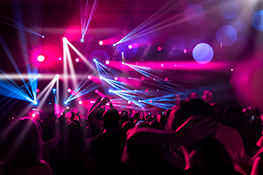The Stage Lighting Revolution: How Technology is Changing the Game
The Rise of LED: Energy Efficiency and Vibrant Colors
The shift from traditional incandescent and halogen lighting to LED has been nothing short of transformative. LEDs offer unparalleled energy efficiency, significantly reducing operational costs for venues of all sizes. But energy savings are only part of the story. LEDs boast a vastly superior color rendering index (CRI), producing richer, more accurate colors that bring productions to life. This allows lighting designers to achieve a level of nuance and detail previously unimaginable, creating breathtaking visual landscapes.
Furthermore, the lifespan of LEDs far surpasses that of traditional bulbs, minimizing maintenance and replacement costs. This longevity translates to a significant return on investment, making LED lighting a financially savvy choice for both professional and amateur productions.
Intelligent Lighting and Control Systems: Precision and Flexibility
Intelligent lighting fixtures, equipped with motorized shutters, gobos, color mixing capabilities, and advanced dimming curves, have revolutionized lighting design. These fixtures allow for precise control over every aspect of the light beam, enabling complex and dynamic lighting effects with unparalleled ease. This level of control opens up creative possibilities previously confined to large-scale productions.
Paired with sophisticated control systems, such as those using DMX (Digital Multiplex) protocols, intelligent lighting allows for pre-programmed sequences, real-time adjustments, and seamless integration with other stage technologies. This allows lighting designers to create truly immersive and interactive experiences for audiences.
Wireless Technology: Untethering Creativity
The integration of wireless technology has further liberated lighting designers, removing the constraints of cumbersome cables and allowing for greater flexibility in placement and movement of fixtures. Wireless DMX systems offer a reliable and efficient way to control lights remotely, facilitating complex setups and dynamic changes without the limitations of physical wiring. This is particularly beneficial for outdoor performances and large-scale events.
Data-Driven Lighting Design: The Future is Now
The incorporation of data analytics into lighting design is emerging as a significant trend. By tracking energy consumption, fixture performance, and even audience response, venues can optimize their lighting systems for maximum efficiency and impact. This data-driven approach enables informed decision-making, leading to significant cost savings and improved creative outcomes. Real-time feedback loops allow designers to experiment with new techniques and refine their work based on tangible data.
Virtual Reality and Augmented Reality: Shaping the Stage of Tomorrow
VR and AR technologies are poised to revolutionize the way lighting designers work. Virtual environments allow designers to visualize and experiment with lighting designs in a safe and cost-effective way before implementing them on a physical stage. AR, on the other hand, overlays digital information onto the real world, allowing designers to see how their virtual designs will interact with the physical space in real-time.
Conclusion: Embracing the Innovation
The stage lighting industry is experiencing a period of unprecedented innovation. From the energy efficiency of LEDs to the precision of intelligent lighting and the limitless possibilities of wireless and data-driven technologies, the future of stage lighting is brighter than ever before. By embracing these advancements, lighting designers can create more impactful, efficient, and ultimately more memorable experiences for audiences worldwide.


 Auditorium Construction Services
Auditorium Construction Services 